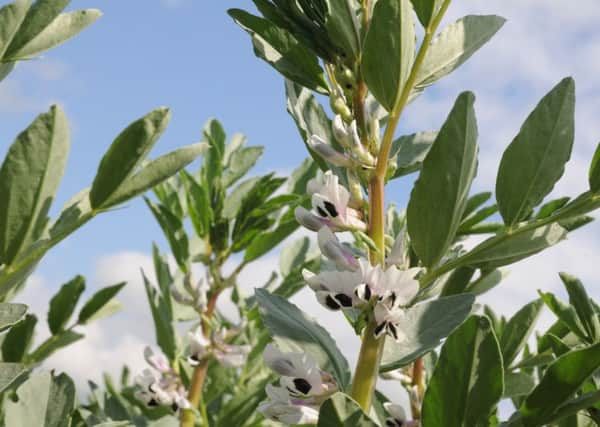Crops alert over warm weather and wet soils


The recent mini-heatwave should be a warning to bean growers in particular for the potential of bruchid beetle activity this season, crop disease protection specialists Syngenta said.
Hot, dry weather has initiated overwintered bruchid beetle movement into crops over recent days, and while most crops have yet to reach the first pod set stage when they would vulnerable to egg laying, growers are urged to prepare for beetle activity and egg laying.
Advertisement
Hide AdAdvertisement
Hide AdPete Saunders, Syngenta’s technical manager, said trials had shown treatment with the insecticide Hallmark Zeon can help prevent egg laying, and the resulting larvae damage to bean quality.
“Our studies have also shown that bruchid damaged beans have a significantly lower TGW (thousand grain weight), which reduces overall yield of the crop, not just the quality, Mr Saunders said.
“Growers producing beans for animal feed, where yield is paramount, should also be considering bruchid control.”
Meanwhile, agronomy advisers Agrovista said foliar feeding - whereby plants are fed by applying liquid fertilizer directly to their leaves - of late-drilled spring cereal crops is key to help plants establish in deceptively cold and wet soils.
Advertisement
Hide AdAdvertisement
Hide AdThe firm’s technical manager, Chris Martin, said: “Although on the surface seed-beds look fine, a couple of inches down they are puddled and wet.
“That is a pretty harsh environment for young roots. Crops are at risk of significant stress during the rapid growth likely to be associated with this warmer spell of weather.”
He said foliar nutrition is an “absolute necessity”.
“Roots are going to be stunted and slow growing and won’t be able to deliver sufficient nutrients from the soil. We will need to feed the leaves rather than the roots to help these young plants through. How long we have to do so depends on the weather – if we get reasonable amounts of rain and warmth, that will help. If it turns dry, these crops are going to struggle. We can’t risk any more delays.”